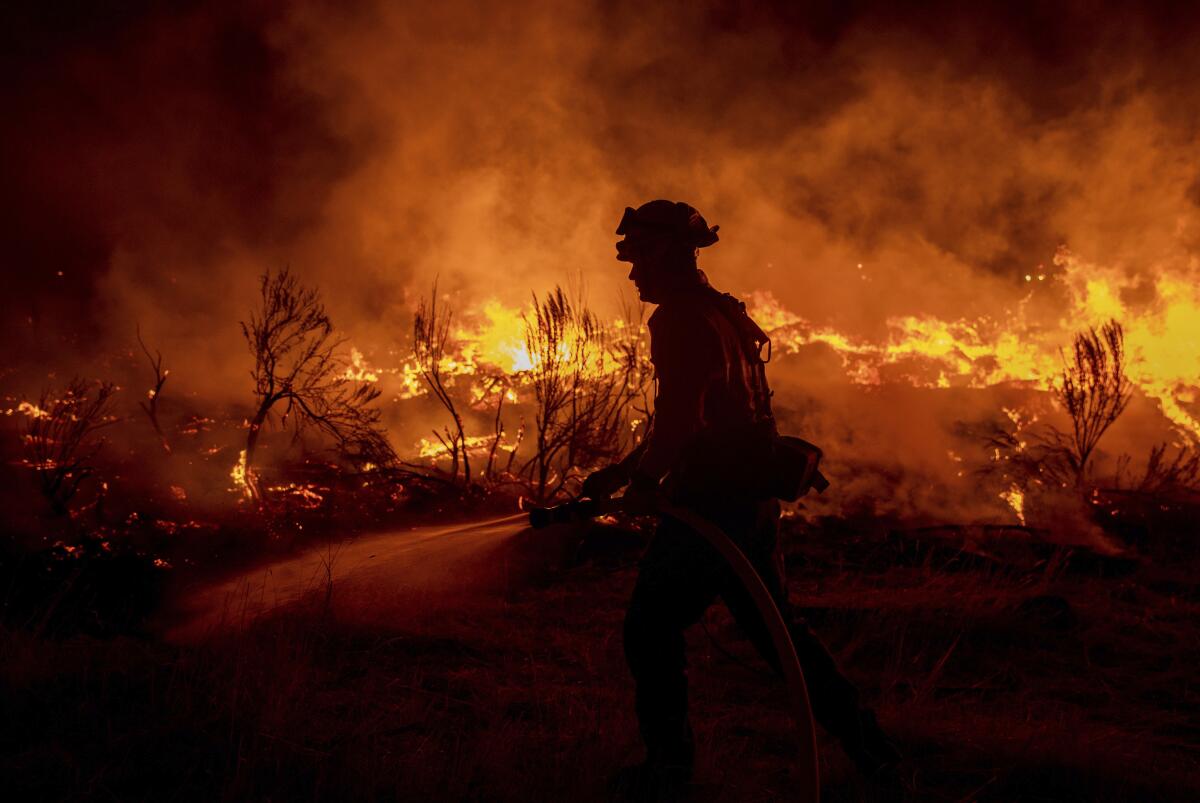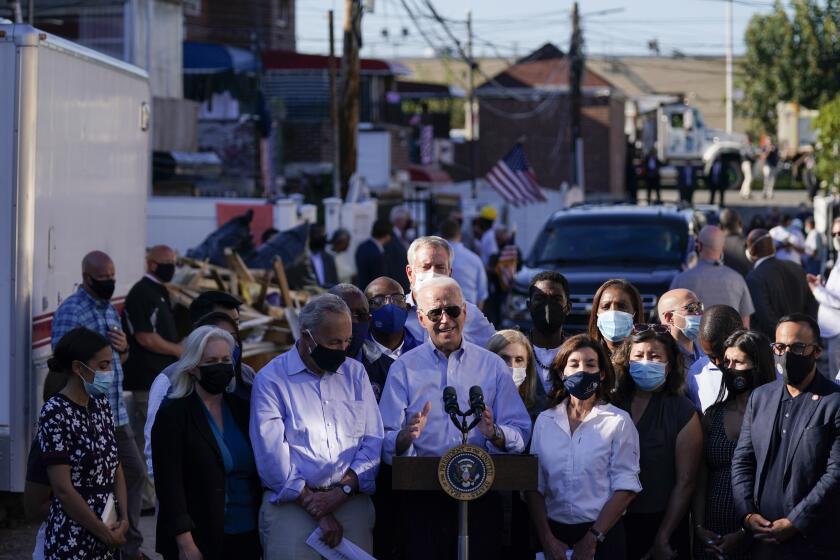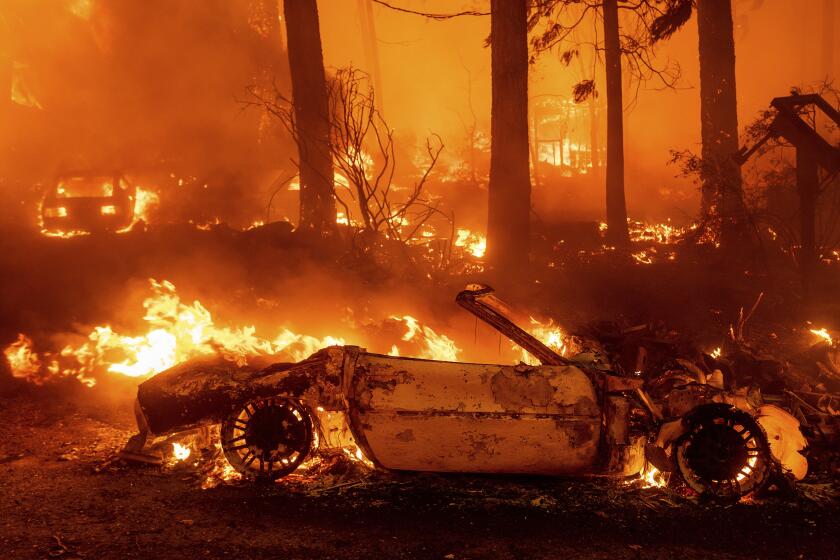“Your company is a convicted felon”: PG&E judge asks why power wasn’t cut on line linked to fire

- Share via
A federal judge wants PG&E Corp. to explain why it didn’t turn off power sooner to a utility line suspected of causing the second-largest wildfire in California history.
At a hearing Monday, U.S. District Judge William Alsup, who oversees PG&E’s criminal probation, questioned a PG&E troubleman who initially discovered that a tree had fallen on the line near the origin of the Dixie Fire. Alsup asked the worker, who the court wants to remain unidentified, why he didn’t consider shutting off power to the line while investigating the cause of the outage that occurred in a high-fire-risk area.
The troubleman said he initially didn’t see a tree on the line or signs of flames and needed to drive several hours before getting closer to the scene to investigate. When he arrived, he saw a tree leaning into wires and a small fire, which he tried to put out.
It took PG&E almost 10 hours to respond to the initial sign of trouble on the early morning of July 13.
“Wouldn’t it have been the prudent thing to do to turn that power off in case there was a tree on the line,” Alsup asked during the hearing. Alsup said it was possible that the tree could have caused a ground fault with electricity flowing through it and eventually igniting it.
He directed PG&E to identify the individuals who made the decision to respond to the event and answer his additional questions about the blaze by Friday.
“We share the court’s focus on safety and recognize that we must take a leading role in preventing future catastrophic wildfires,” PG&E said in a statement. “We also recognize the devastation caused by the Dixie Fire, and we are grateful to the first responders who continue to fight and work to contain the blaze.”
Biden departs on a three-state western swing on Monday. In California, he’ll assess wildfire damage and campaign for Newsom ahead of the recall election.
High Stakes
The stakes are mounting for PG&E if it’s found at fault for the Dixie fire and others that have ravaged Northern California in recent years. The company is fighting criminal charges for a 2019 fire and facing a criminal investigation for a 2020 blaze. Alsup’s scrutiny could put additional pressure on state regulators to escalate their oversight of the company. Meanwhile, if PG&E is found to have willfully disregarded public safety, it may be denied protection in a California wildfire insurance fund.
Since its ignition, the Dixie fire has consumed more than 950,000 acres while burning most of the Gold Rush-era town of Greenville. It was the first blaze in state history to burn from one side of the Sierra Nevada range to the other. The wildfire has destroyed 1,329 structures and resulted in one death, according to the California Department of Forestry and Fire Protection. The cause of the fire remains under investigation.
Alsup has been scrutinizing PG&E’s role in sparking wildfires as part of his oversight of the company that stems from a 2010 deadly natural gas explosion. PG&E emerged from bankruptcy last year after its equipment was blamed for starting some of the worst blazes in California history, including the 2018 Camp fire that destroyed the town of Paradise and killed 85 people.
California fire seasons are growing longer and more destructive. This year’s still-raging Dixie fire quickly flared into one of the largest yet.
For Monday’s hearing, Alsup requested the appearance of two PG&E employees who provided information about a drone that firefighters reportedly said interfered with initial efforts to put out the Dixie fire. PG&E has said that neither the company nor contractors working on its behalf were operating a drone near where the fire started.
“Your company is a convicted felon that poses a safety hazard to the state of California,” Alsup said to PG&E attorneys Monday. He said his job is to “rehabilitate” the company until its probation ends early next year.
More to Read
Inside the business of entertainment
The Wide Shot brings you news, analysis and insights on everything from streaming wars to production — and what it all means for the future.
You may occasionally receive promotional content from the Los Angeles Times.












